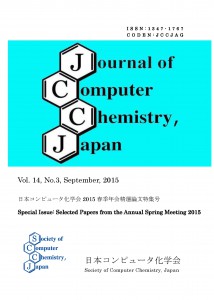<Title:> 最大エントロピー法による発光吸収スペクトルの解析
<Author(s):> 遠越 光輝, 狩野 覚, 善甫 康成
<Corresponding author E-Mill:> 14t0007(at)cis.k.hosei.ac.jp
<Abstract:> The maximum entropy method (MEM) is one of the key techniques for spectral analysis. The main feature is to describe spectra in low frequency with short time-series data. We adopted MEM to analyze the spectrum from the dipole moment obtained by the time-dependent density functional theory (TDDFT) calculation in real time, which is intensively studied and applied to computing optical properties. In the MEM analysis, we proposed that we use the concatenated data set made from several-times repeated raw data and the phase shift. We have applied this technique to the spectral analysis of the TDDFT dipole moment of oligo-fluorene with n=8. As a result, higher resolution can be obtained without any peak shift due to the phase jump. The peak position is in good agreement with that of FT with just raw data. The efficiency and the characteristic feature of this technique are presented in this paper.
<Keywords:> Real-time, Time-dependent density functional theory, Maximum entropy method, Fourier transform, Dipole moment
<URL:> https://www.jstage.jst.go.jp/article/jccj/14/3/14_2015-0042/_article/-char/ja/
